In-Car from Spec Box Roll Over at WSIR...
#46
Drifting
There are several POC members on Rennlist (myself included), but don't expect someone official from the club to post a bunch of pictures as some kind of service to the community. The car doesn't belong to the POC, so I believe it is up to the owner to do that. I would be interested in seeing pics too, I've built a few cages and maybe I could learn something from the carnage. I can understand why the owner/shop would hesitate to show pics though. If you are concerned your best bet would be to talk to Steve Parker and some of the shops that build Boxsters about it, you will get much better info that way...
#47
Thought we would have heard something by now too. I wasn't intentionally hiding them, just offered to let others post their findings or explanation first. Seeing as that hasn't happened, I guess sharing the pictures does no harm.
POC Competition Committee officials as well as some supporting shop owners have taken a close look at the results. I don't know what the official stance of POC regarding the cage and safety requirements will be yet. The year end involves some turn over and change of officials in these positions so it is a hard time to get these things done. I assume the official announcement, if any, will be made directly to the members and reflected in the GCR. I doubt it will offer any kind of report on this specific incident as I have never seen such a thing in the past, but may offer a clarification or revision of safety rules moving forward.
I snapped a number of pictures with permission from the car and shop owner. I believe the car owner just wants people to be able to learn from this.

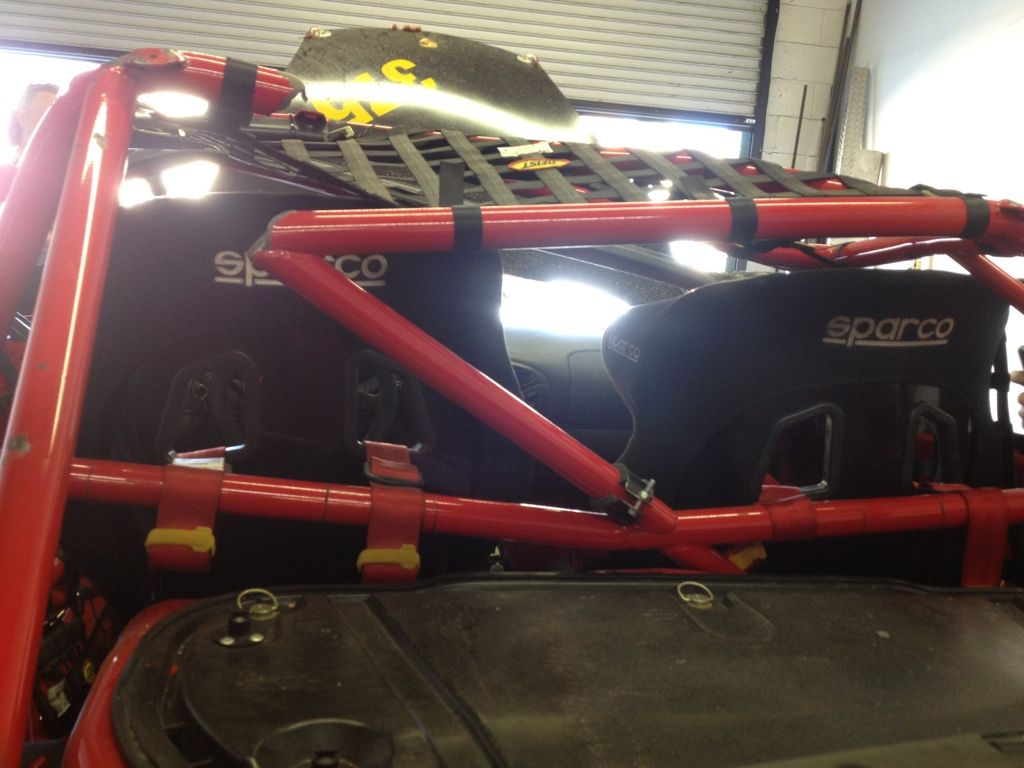

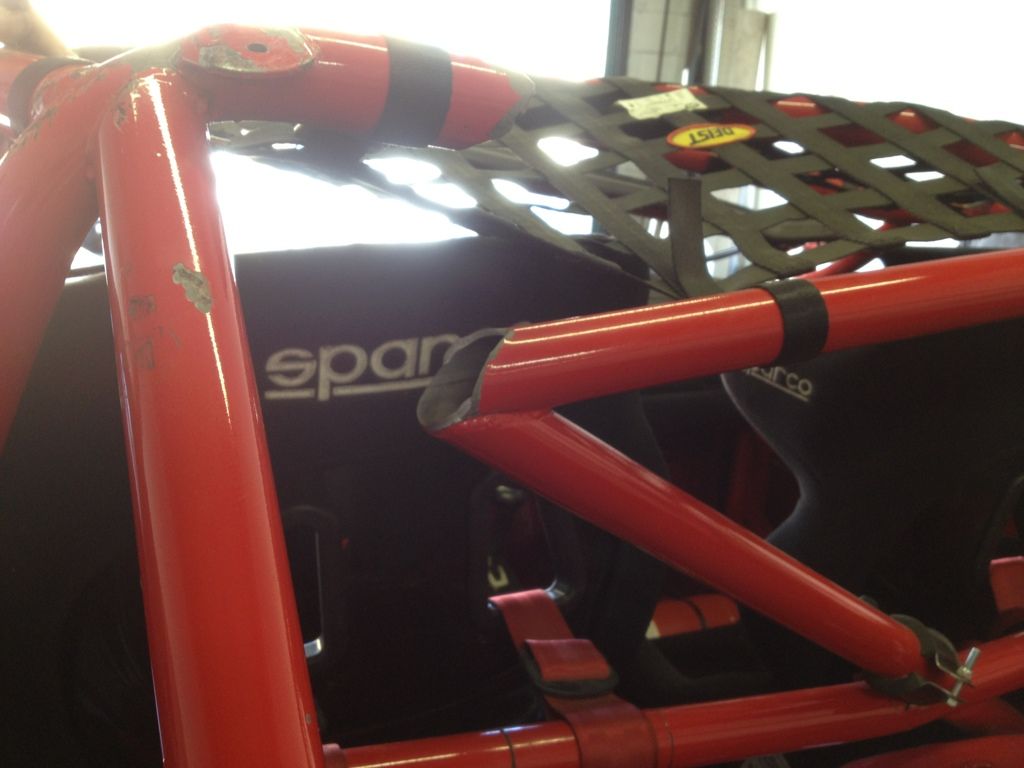


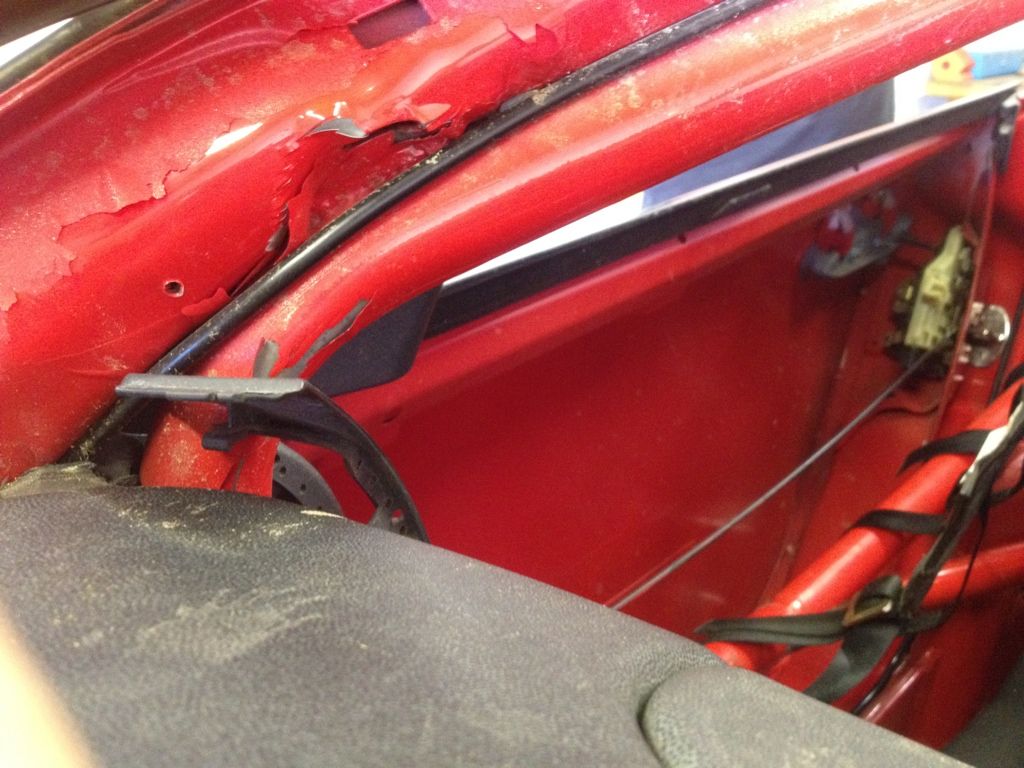
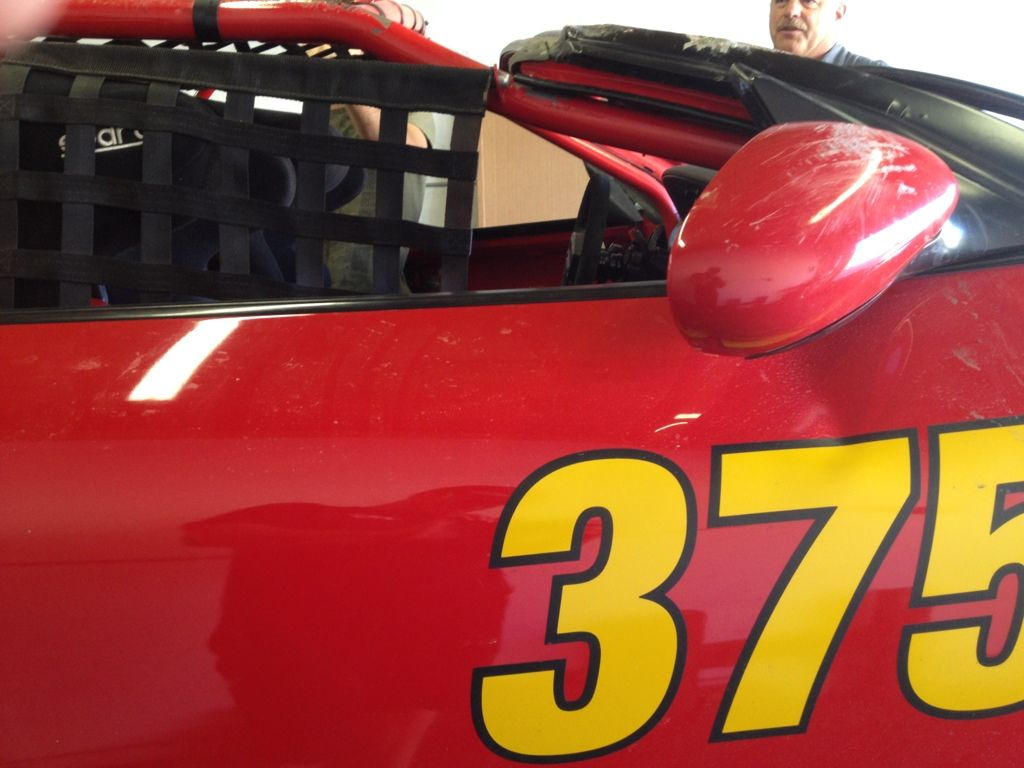

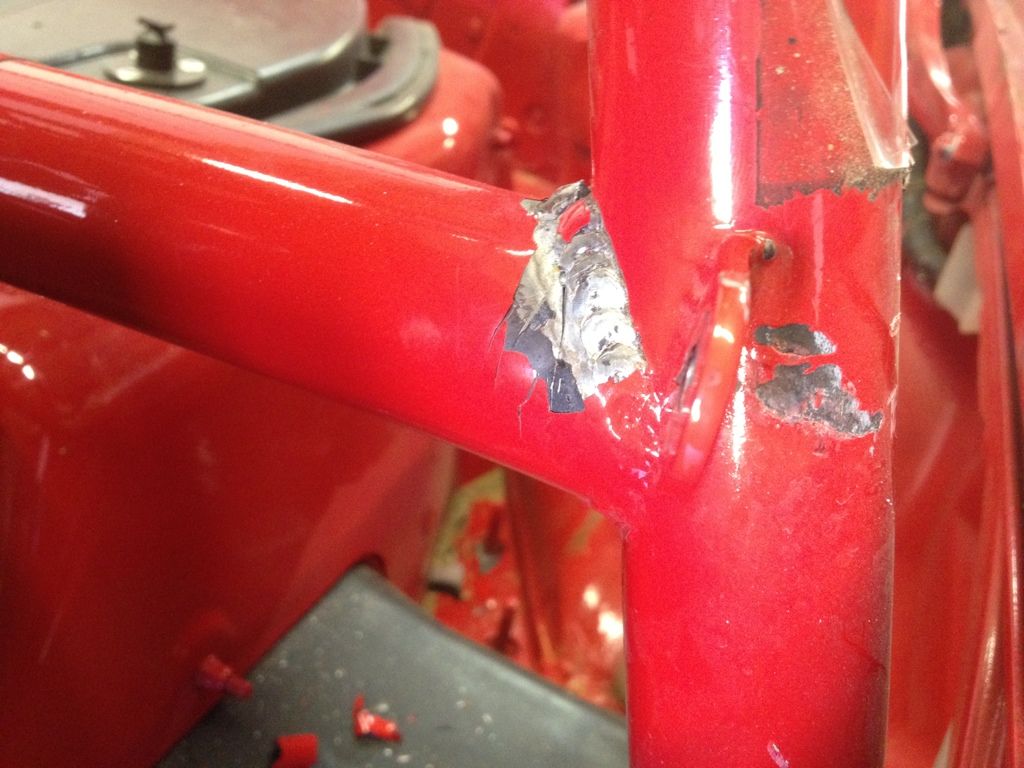
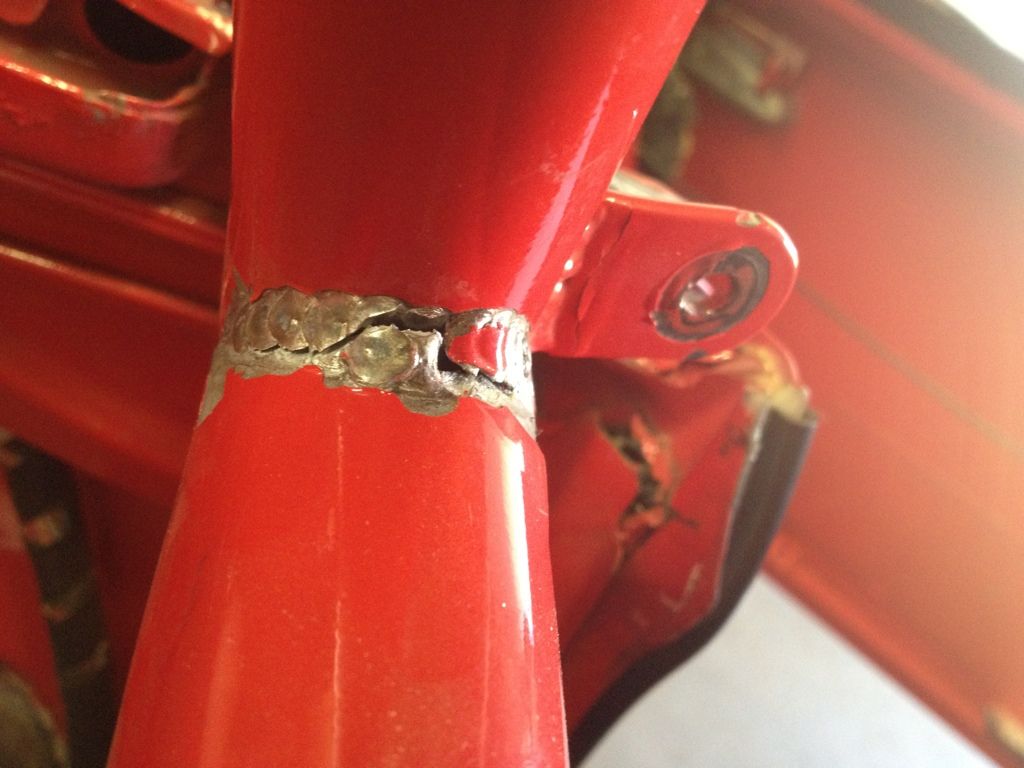
POC Competition Committee officials as well as some supporting shop owners have taken a close look at the results. I don't know what the official stance of POC regarding the cage and safety requirements will be yet. The year end involves some turn over and change of officials in these positions so it is a hard time to get these things done. I assume the official announcement, if any, will be made directly to the members and reflected in the GCR. I doubt it will offer any kind of report on this specific incident as I have never seen such a thing in the past, but may offer a clarification or revision of safety rules moving forward.
I snapped a number of pictures with permission from the car and shop owner. I believe the car owner just wants people to be able to learn from this.











#48
WOW! I have more questions than answers and would like to see the car in person. That's not going to happen so all I got are the very nice pictures to try and interpret. Thanks for posting! It appears that there is buckling at some of the cage feet to the chassis. once there is buckling at the foundation you loose support for other areas of the structure. To me the feet are everything. Photo 11 the last one makes it appear that the weld has failed. It looks like a cold weld. There seems to be 2 schools of thought on MIG which this cage appears to be. One is that the weld should be of sufficient penetration and be in one continuous bead. Second is to duplicate the look of a TIG weld the fallen over stack of dimes. Either can be poorly done and either can be expertly done. I use both methods but tend to do my MIG more like the TIG look. However it is very important to look into the weld pool to make sure you are getting good penetration. The single bead method can be a big mistake if penetration is not good. When that happens we call it a bird poop. The TIG look can be used to hide sloppy joint approximation and fill the joint with weldment and then run a bead over to hide everything. I am making no accusation just saying a few things about MIG welds. Photo 2 with the broken rollover hoop is very scary. The design is used all the time to give the driver sort of a hoop within a hoop making the inner hoop look more like what we see in drag cars. It is possible that we would have seen more hoop bending and not breaking if the diagonal was run to the corner node where the cage is strongest. It is a compromise in design. You can't build for every occurence. The fracture is puzzling and I wonder about build/weld technique. There are some builders who work on a time clock and don't like to get burned. So they weld a joint and spray them with water or hang a damp rag and weld the next joint. The cabin is cramped. Nothing sucks more than putting your back on a hot weld! Steel heated by welding in the heat effected zone that is too quickly cooled changes the steel grain structure making it hard and brittle (martensite). This steel change is one reason many prefer DOM tubing over 4130 chromoly and all the issues with "do I or don't I" have to stress relieve my chromo cage. To me I wonder if this fracture is made worse due to embrittlement from welding. Typical DOM is for rollcages is called SAE 1020 DOM. All such steel is supposed to be the same. All I can say is watch out!!!! I have personally used USA made and From India made 1020 DOM and I can tell you the India tubing was much easier to fabricate with. It was soft and cut easy. I took it back to the wholesaler who gave me all kinds of cr@p about how I did not know anything. Look at picture 8 of the folding "A" piller. It did not seem to fair much better than the OEM sheetmetal A piller. I wonder where the steel tube came from? Well maybe this is just a big nasty hit and that is what happens. I would hope my cages which I have tested twice hold up better. maybe nothing more can be done but go up in tube diameter and that this is just a fluke. The cage looks pretty well designed to me. Maybe more fortification of the feet, Maybe more gussets, maybe gusseting the "A" piller. , and maybe a gusset tube from the fractured node to the left rear down tube would prevent the fracture. Door support appears simple and low on the chassis (picture3). Collapse of the harnessbar (picture2) may have been prevented by having more substantial door bars. NASCAR bars on the driver's side supported at the sillplate with node at the level of the harness bar may prevent the driver's side of the cage collapsing and may have reduced the stress on the rollover hoop and further support the cage footings. Even the "X" bar with rear of X at a node at the level of the harness bar would have helped. I call this a failure of the safety cell and a darn lucky driver. Again I appreciate posting the photos and cast no dispersions on the cage or its designer..
#49
Rennlist Member
Surprised nobody mentioned the front runners coming around at pace past the crash scene. Why hadn't they been flagged and slowed to a crawl by then? Plenty of time for that to have happened.
#50
The failure on the main hoop does look like typical chromoly weld failure. It looks like it started at the HAZ (heat affected zone) which would make sense... although in one of the pictures it almost looks like you can see a dark line on the inside of the tube. Doubt it's actually ERW tubing, (I sure hope it isn't) probably just some discoloration left over from the initial ERW manufacturing process.
The weld failure at the driver's side harness bar is typical MIG weld cold lap (somebody stitch welding to try to simulate the look of a TIG weld). You can tell by the dimples in the middle of each MIG "tack". Unfortunately, this is a trendy technique in motorsports welding.
Also not seen in these pictures is the illegal "misalignment" of the load path within the main hoop diaginal bar. Not only is the bar not a continuious piece (which is technically allowed in some sanctioning bodies), but it does not exist within the same plane as the main hoop which is considered illegal by many sanctioning bodies. The lower section of the bar actually has a bend in it so it would clear the engine compartment. This could have played a factor in the main hoop failure, but the real solution would have been more x-bracing, especially within the rear section of the cage where there is absolutely nothing supporting the upper right corner of the main hoop. It "looks" like the failure started in this corner and then found the other weaknesses in the cage. It also looks like the first (lowest) bend on the passenger side a-pillar collapsed which is one reason why 996/997 Cup cars have sheet metal gussets in this exact area of the a-pillar. You can also see this done in a more extreme way in the factory BMW Motorsports E46 cages with their huge dimple die'd sheet metal gussets.
The weld failure at the driver's side harness bar is typical MIG weld cold lap (somebody stitch welding to try to simulate the look of a TIG weld). You can tell by the dimples in the middle of each MIG "tack". Unfortunately, this is a trendy technique in motorsports welding.
Also not seen in these pictures is the illegal "misalignment" of the load path within the main hoop diaginal bar. Not only is the bar not a continuious piece (which is technically allowed in some sanctioning bodies), but it does not exist within the same plane as the main hoop which is considered illegal by many sanctioning bodies. The lower section of the bar actually has a bend in it so it would clear the engine compartment. This could have played a factor in the main hoop failure, but the real solution would have been more x-bracing, especially within the rear section of the cage where there is absolutely nothing supporting the upper right corner of the main hoop. It "looks" like the failure started in this corner and then found the other weaknesses in the cage. It also looks like the first (lowest) bend on the passenger side a-pillar collapsed which is one reason why 996/997 Cup cars have sheet metal gussets in this exact area of the a-pillar. You can also see this done in a more extreme way in the factory BMW Motorsports E46 cages with their huge dimple die'd sheet metal gussets.
Last edited by kcpaz; 12-29-2012 at 02:14 AM.
#51
Nordschleife Master
Thread Starter
Join Date: Oct 2004
Location: Vacuuming Cal Speedway
Posts: 7,306
Likes: 0
Received 7 Likes
on
5 Posts
Below is the cage builder's report after visiting the car and seeing the videos. I've removed his name and I ask you all to respect his privacy. I don't have to post this, so please respect my wishes. If this turns into a blame game I'll ask the moderators to close this thread. That doesn't mean you shouldn't question his findings, that's completely open for discussion. I'm posting this for the benefit of knowledege, all of ours....
"Hey John,
I think we've gathered enough opinions over the last couple weeks or so to come to a concensus on the boxster crash---it certainly feels like I've been living and breathing rollcage diagrams/crash pics and generally communicating with structural engineers (not my favorite pasttime!) enough for this year anyways...I think everyone's "knee jerk" reaction to the crash/rollcage was substantiated---I believe it's good to constantly be thinking about safety and ways to improve it. This crash wasn't the typical roadrace incident i.e. like car vs. car or car vs. tirewall etc...this crash was more akin to a rallycar "WRC" style or OFFROAD crash where we commonly see multiple rolls at higher speeds on uneven terrain. We're very familiar with these crash's as we build both rallycars and offroad trucks on a daily basis. It's very common in these disciplines to have tubes crack/snap/deform/bend after a big crash----and believe me these vehicles have much more required tubing/more "developed" rulesets and consequently offer more safety to the occupants. Based on the severity of this crash and the number of big impacts the rollcage/safety gear did it's job---ultimately the driver walked away without a scratch and when I met him a few days later he was doing great. Anytime there's a crash/roll and the driver get's away without injury, it's a success. When the roll is 5-6 times over at 100mph or so it's good safety gear combined with a bit of luck. With that said, it doesn't mean we shouldn't learn from the incident/look for ways to improve safety. First let's look at what happened...
Looking at the car you can see impact marks on all four corners of the body and cage. Based on the cage defomation the major impacts we're on the front passenger a-pillar and passenger side mainhoop. The amount of deformation shows us that the a-pillar took extremely large impacts---one of the engineers was guessing somewhere over 20g's. The mainhoop break behind the driver was caused by excessive tensile force followed by shearing after the multiple impacts. The top of the mainhoop was literally ripped apart by the diagonal---the hits were forcing the top of the mainhoop from right to left while the diagonal was trying to hold fast. A fracture occurred in the heat affected zone just outside the weld bead on the bottom of the mainhoop/diagonal intersection. The fracture grew until it was just more than halfway around the tube as evidenced by the step in the break and the metal grain stucture. From there it was sheared downward holding on to the very last millimeter as evidenced by the triangle bent down 90 degrees. After inspecting the joint/weld, no evidence of crystalization or excessive heat was found and an even heat pattern was observed on the inside of the tubing indicating a properly mitered/welded joint. The tube simply broke from being overloaded due to big multiple impacts...Additionally the mainhoop was ripped away from the body where it was attatched to the lower b-pillar indicating/confirming the above direction/loading.
Are these acceptable results from a big crash? Based on the current ruleset, yes, but your not going to get the same results everytime. Unfortunately you could subject 10 cars to multiple roll overs at the same speed in the same turn and your results are going to be different everytime. The angle/pitch/speed/ground shape etc...all effect the outcome and it will never be exactly the same. Fortunately we have a set of rules that dictate what safety gear we need and what the design of the rollcage needs to be to maximize our safety in the crash. These rules trickle down from the major sanctioning bodies and are constantly evolving. For instance ERW seamed 1020 mild steel was the most common cage material throughout the 90's and I can say that the driver in this crash may have not faired as well with it---the HANS is another example---10 years ago only the pro's would have had them and now they are required at the club level and I'll bet that it protected the driver in this crash as well.
The boxsters are a bit unique/oddball because they are a convertible/mid-engine platform. One of the first cars we built actually had the stock/unmodfied hardtop on it and we fit the cage as tight as we could and still a driver around 6 foot was very close to the a-pillar bars. Now fortunately we have several fiberglass tops available that have helped that issue, but still we have to lean mainhoops back to allow adequate space for most drivers. The current ruleset is the same for both "tintops" and convertibles as far as cage design, but we've added gussets to the roof spreader as well as a roof diagonal which really ads an enormous amount of safety and definitely helped protect the driver in this crash. We use a two piece diagonal design in the boxster because of the space limitations/requirements---with the hoop leaned back the rear bulkhead gets in the way on a one piece design. While this design is legal with all sanctioning bodies, it's considered a "B" design and is commonly known to be 4-6% less strong---this design also allow's access to the engine cover behind the seats. We've stitched both the a-pillar bars and mainhoop into the body of the car which add's a bit of safety/stiffness, but more than that requires that the bars be touching the body which maximizes the envelope of safety for the driver.
So with all of this said/everything taken into consideration I wouldn't recommend making any changes/additions to the cars that I've built currently running and feel confident they'd do equally as well in similar situations. The severity of this crash caused the bending, deformation, fractures in the cage and that absorbed enough of the energy/impacts to allow the driver to walk away in good shape. I'd definitely like to see the cages inspected thoroughly at there annual tech's (which should be done anyways). One of the engineers suggested that since the cars were convertibles the cage is subjected to more stress cycles than the normal tintops so inspections needed to be even more frequent. If a member felt compelled/wanted to add additional safety to the cage I'd recommend adding a rear diagonal brace or even an X in the rear backstays. While this impedes access to the rear upper engine cover, these additions would give more lateral support to the mainhoop and would be an improvement.
For new builds/rule updates I'd love to see an additional roof bar required, whether in a diagonal or longtudinal direction---and gussets in the front corners (it's essentially a convertible and those generally take the first hit). We require them in all north american rallycars, they really don't add any additional cost/performance benefit and are easy to install/easily accessed without the roof. I'd love to see the drivers side door requirements increased. Arm restraints or a roof net would be another great idea that's easy and adds additional safety...
I feel like I just wrote a novel"...
"Hey John,
I think we've gathered enough opinions over the last couple weeks or so to come to a concensus on the boxster crash---it certainly feels like I've been living and breathing rollcage diagrams/crash pics and generally communicating with structural engineers (not my favorite pasttime!) enough for this year anyways...I think everyone's "knee jerk" reaction to the crash/rollcage was substantiated---I believe it's good to constantly be thinking about safety and ways to improve it. This crash wasn't the typical roadrace incident i.e. like car vs. car or car vs. tirewall etc...this crash was more akin to a rallycar "WRC" style or OFFROAD crash where we commonly see multiple rolls at higher speeds on uneven terrain. We're very familiar with these crash's as we build both rallycars and offroad trucks on a daily basis. It's very common in these disciplines to have tubes crack/snap/deform/bend after a big crash----and believe me these vehicles have much more required tubing/more "developed" rulesets and consequently offer more safety to the occupants. Based on the severity of this crash and the number of big impacts the rollcage/safety gear did it's job---ultimately the driver walked away without a scratch and when I met him a few days later he was doing great. Anytime there's a crash/roll and the driver get's away without injury, it's a success. When the roll is 5-6 times over at 100mph or so it's good safety gear combined with a bit of luck. With that said, it doesn't mean we shouldn't learn from the incident/look for ways to improve safety. First let's look at what happened...
Looking at the car you can see impact marks on all four corners of the body and cage. Based on the cage defomation the major impacts we're on the front passenger a-pillar and passenger side mainhoop. The amount of deformation shows us that the a-pillar took extremely large impacts---one of the engineers was guessing somewhere over 20g's. The mainhoop break behind the driver was caused by excessive tensile force followed by shearing after the multiple impacts. The top of the mainhoop was literally ripped apart by the diagonal---the hits were forcing the top of the mainhoop from right to left while the diagonal was trying to hold fast. A fracture occurred in the heat affected zone just outside the weld bead on the bottom of the mainhoop/diagonal intersection. The fracture grew until it was just more than halfway around the tube as evidenced by the step in the break and the metal grain stucture. From there it was sheared downward holding on to the very last millimeter as evidenced by the triangle bent down 90 degrees. After inspecting the joint/weld, no evidence of crystalization or excessive heat was found and an even heat pattern was observed on the inside of the tubing indicating a properly mitered/welded joint. The tube simply broke from being overloaded due to big multiple impacts...Additionally the mainhoop was ripped away from the body where it was attatched to the lower b-pillar indicating/confirming the above direction/loading.
Are these acceptable results from a big crash? Based on the current ruleset, yes, but your not going to get the same results everytime. Unfortunately you could subject 10 cars to multiple roll overs at the same speed in the same turn and your results are going to be different everytime. The angle/pitch/speed/ground shape etc...all effect the outcome and it will never be exactly the same. Fortunately we have a set of rules that dictate what safety gear we need and what the design of the rollcage needs to be to maximize our safety in the crash. These rules trickle down from the major sanctioning bodies and are constantly evolving. For instance ERW seamed 1020 mild steel was the most common cage material throughout the 90's and I can say that the driver in this crash may have not faired as well with it---the HANS is another example---10 years ago only the pro's would have had them and now they are required at the club level and I'll bet that it protected the driver in this crash as well.
The boxsters are a bit unique/oddball because they are a convertible/mid-engine platform. One of the first cars we built actually had the stock/unmodfied hardtop on it and we fit the cage as tight as we could and still a driver around 6 foot was very close to the a-pillar bars. Now fortunately we have several fiberglass tops available that have helped that issue, but still we have to lean mainhoops back to allow adequate space for most drivers. The current ruleset is the same for both "tintops" and convertibles as far as cage design, but we've added gussets to the roof spreader as well as a roof diagonal which really ads an enormous amount of safety and definitely helped protect the driver in this crash. We use a two piece diagonal design in the boxster because of the space limitations/requirements---with the hoop leaned back the rear bulkhead gets in the way on a one piece design. While this design is legal with all sanctioning bodies, it's considered a "B" design and is commonly known to be 4-6% less strong---this design also allow's access to the engine cover behind the seats. We've stitched both the a-pillar bars and mainhoop into the body of the car which add's a bit of safety/stiffness, but more than that requires that the bars be touching the body which maximizes the envelope of safety for the driver.
So with all of this said/everything taken into consideration I wouldn't recommend making any changes/additions to the cars that I've built currently running and feel confident they'd do equally as well in similar situations. The severity of this crash caused the bending, deformation, fractures in the cage and that absorbed enough of the energy/impacts to allow the driver to walk away in good shape. I'd definitely like to see the cages inspected thoroughly at there annual tech's (which should be done anyways). One of the engineers suggested that since the cars were convertibles the cage is subjected to more stress cycles than the normal tintops so inspections needed to be even more frequent. If a member felt compelled/wanted to add additional safety to the cage I'd recommend adding a rear diagonal brace or even an X in the rear backstays. While this impedes access to the rear upper engine cover, these additions would give more lateral support to the mainhoop and would be an improvement.
For new builds/rule updates I'd love to see an additional roof bar required, whether in a diagonal or longtudinal direction---and gussets in the front corners (it's essentially a convertible and those generally take the first hit). We require them in all north american rallycars, they really don't add any additional cost/performance benefit and are easy to install/easily accessed without the roof. I'd love to see the drivers side door requirements increased. Arm restraints or a roof net would be another great idea that's easy and adds additional safety...
I feel like I just wrote a novel"...
#53
Eric, thanks for the photos--very interesting
John, thanks for following up on this and posting the comments from the cage builder.
Cage Builder, thank you for sharing your info and insight.
John, thanks for following up on this and posting the comments from the cage builder.
Cage Builder, thank you for sharing your info and insight.
#54
#55
Three Wheelin'
Thanks for an educational thread. I will say this: I have never before appreciated track guard-railing as much as I do now.... The cage builder is right - this was a rally-like impact. And that is directly because the driver encountered a berm (and a sharp one at that) rather than an engineered barrier.... In addition to whatever is learned via the cage and build out, the Track should look into re-grading the involved area as runoff there is not to be unexpected. This from someone with a long family history of road construction, FWTW..
#56
Thanks for an educational thread. I will say this: I have never before appreciated track guard-railing as much as I do now.... The cage builder is right - this was a rally-like impact. And that is directly because the driver encountered a berm (and a sharp one at that) rather than an engineered barrier.... In addition to whatever is learned via the cage and build out, the Track should look into re-grading the involved area as runoff there is not to be unexpected. This from someone with a long family history of road construction, FWTW..
#57
Rennlist Member
^^^^^ exactly what I was thinking. Assessing cage failure mechanism is important, but the major issue here was the berm. I think our efforts would be well served to collectively pressure (as customers) track owners to make some changes, especially in particularly nasty areas. On the East coast, I think the biggest offender is Summit Point, where I've witnessed far too many cars roll on berms or hit trees. Pocono infield is also pretty gnarly in spots too.
Last edited by ninjabones; 12-29-2012 at 07:30 PM.
#58
Unfortunately Willow Springs is a bit like the old west.... go off at your own risk... this track has been around for nearly 60 years and having a simple, straight off will cause a significant amount of damage due to all the large rocks and debris. A simple "racking" of the immediate areas off the asphalt would go a long way.
The berm in the video is troubling. That should not have been there, but no matter how much you tell track management on how it could improve, it all goes on as it did more than half a century ago.
The berm in the video is troubling. That should not have been there, but no matter how much you tell track management on how it could improve, it all goes on as it did more than half a century ago.
#59
Appreciate the knowledge, and this is coming from someone who is just getting his car caged for the first time, but if you slow the video to the point of the first roll, my read is that the speed is about 50mph. Is this kind of deformation and damage at this speed consistent with the frame builder's comments above? The comments above seem to be that this damage would be consistent with g's from an impact and deceleration from 100mph.
#60
Appreciate the knowledge, and this is coming from someone who is just getting his car caged for the first time, but if you slow the video to the point of the first roll, my read is that the speed is about 50mph. Is this kind of deformation and damage at this speed consistent with the frame builder's comments above? The comments above seem to be that this damage would be consistent with g's from an impact and deceleration from 100mph.

